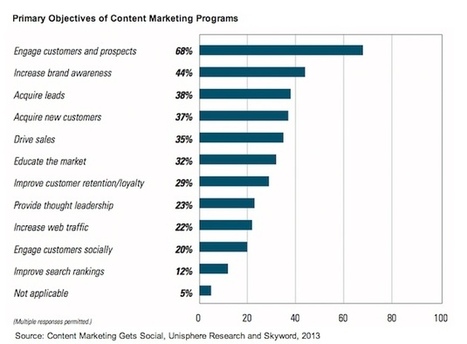Robin Good: Steve Buttry, who has already written several articles on content curation (see the end of his original article), just published this in-depth essay celebrating the launch of a new curation team at Digital First Media and pointing to many of the critical factors neeeded for a content / news curator to be effective.
He covers a lot ground while giving a particular emphasis to the importance of linking and attribution. He writes: "Where you can’t learn much about the source of content you’re curating, consider crowdsourcing the question: Note the name and organization, tell readers what you’ve found and that you’re continuing research and ask them what they know about the source.
Where the source of online content is unclear, you should be clear about what you know and where you found the material."
and...
"Sometimes the name of a person or organization is not sufficient attribution.
If the person or organization is not well-known, do a little research (Google will provide quick answers in many cases; sometimes an “about us” page will help).
Especially in political content, you want to note whether you are linking to partisan sources. A liberal or conservative think tank or political action committee is an entirely different kind of source from a professional media outlet or an independent fact-checking site."
Steve Buttry also includes some valuable key guidelines on "how to add value" when curating content and suggests several types of curation approaches that can be used in the newsroom.
Good advice on curation and practical tips. 8/10
Full article: http://stevebuttry.wordpress.com/2012/07/19/curation-techniques-types-and-tips/
(Image credit: Shutterstock http://tinyurl.com/crw65b4)
Via
Robin Good



 Your new post is loading...
Your new post is loading...










The great title of this scoop says it all. Everyone is creating content marketing but no one is sure how the top of the conversion funnel, those things we do like blogging and social media that drive traffic, and the bottom of the funnel, the magic land of conversions and ROI live, are connected.
There are several problems trying to connect traffic generation to ROI and conversion including:
* Attribution.
* Lack of accurate tools.
* TIME.
* Lack of predictive analytics.
Attribution, knowing where converting traffic came from, can be a bear. Conversion funnels can be peppered with visits; content and referring URLs What was the magic combination that actually created the conversion? Sophisticated analytics model attribution and assign some weighted value, but this is riff with bias and accurate enough (generally) to calm the riot. Some modeled attribution still beats NONE since no modeled attribution can lead to cutting off your websites proverbial nose to spite its face.
Time is part of the attribution problem. Some content lasts for a day and that are all its ever going to do. Other "evergreen" content can last for a year sending converting traffic all along. How do you know when you have short or long term content? By how it behaves and that is defining a bard door after horses are already out.
There is a missing algorithm in all of this. The magic QUANT math that can accurately connect funnel tops to bottoms. The problem is that QUANT math better be flexible and have some Artificial Intelligence-like flexibility or it isn't of much use since the web is a constantly changing sea of data, attribution and time.
We will master these complex FACTORS and find a way to better connect our funnel tops and bottoms someday soon. In the meantime bailing wire and chewing gum ROI systems will continue to rule our content marketing investments.